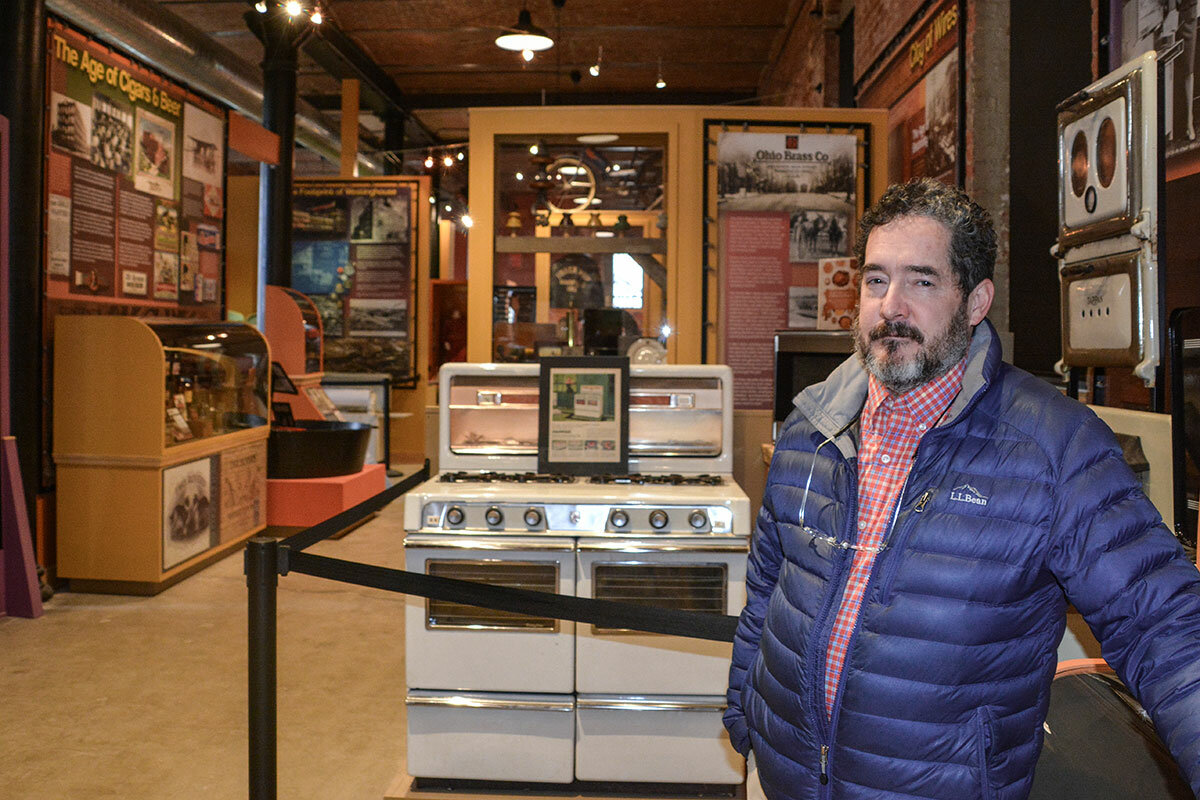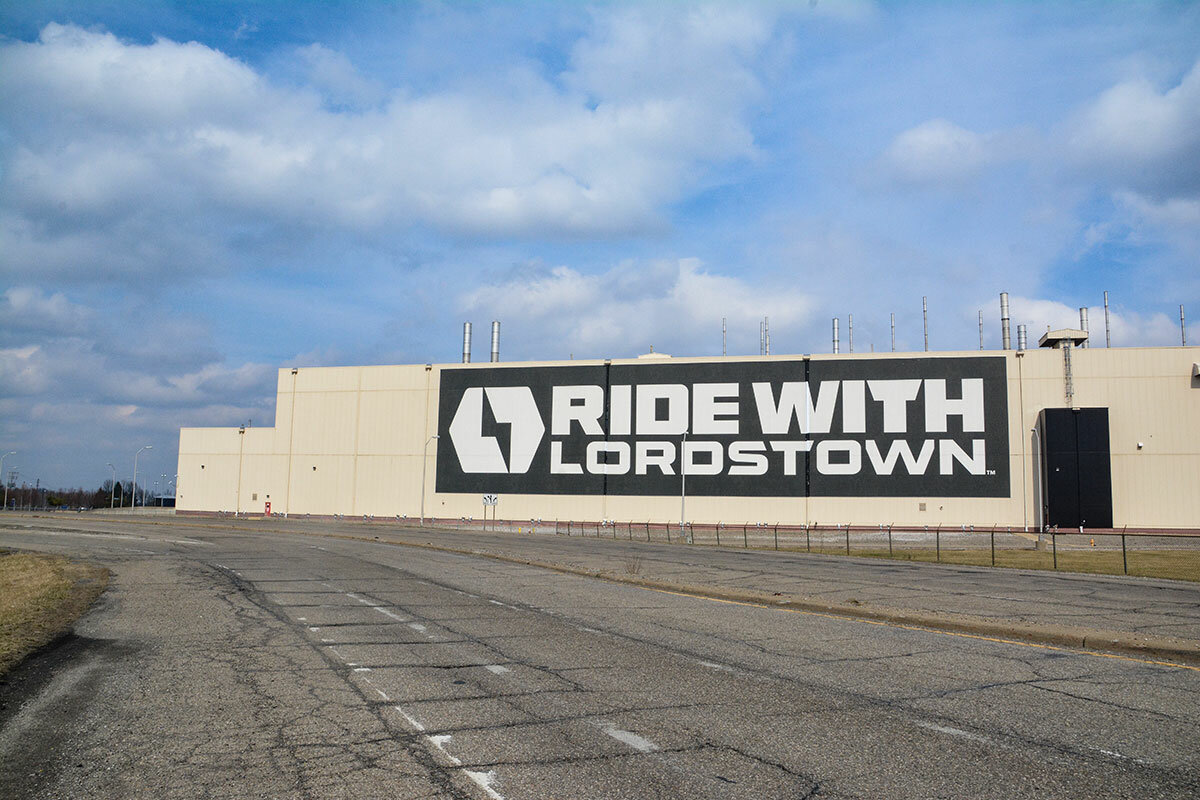‘Silicon Heartland’? Why Ohio could be next US tech stronghold.
Loading...
| NEW ALBANY, Ohio
Fat snowflakes fall on a field of broken yellow corn stalks less than 25 miles northeast of Columbus. Trash litters the side of the two-lane road; grain silos rise in the distance.
“It won’t look like much,” President Joe Biden confessed in his State of the Union address in March, “but if you stop and look closely, you’ll see a ‘field of dreams,’ the ground on which America’s future will be built.”
Later this year, Intel, one of the world’s largest tech companies, plans to break ground on two new semiconductor fabrication plants on this 1,000-acre plot of land in New Albany, Ohio – a $20 billion investment that could create 3,000 jobs. Most notably, this New Albany plant could help ease America’s unmet demand for semiconductors: small computer chips that are needed in everything from cellphones to dishwashers to cars to military equipment.
Why We Wrote This
Midwest manufacturing has taken plenty of hits over the decades. Now shifting views about global supply chains – coupled with the region’s can-build spirit – may contain seeds of a rebound.
A shortage of these chips has become a leading symbol of supply-chain troubles deepened by the pandemic and by rising geopolitical tensions with Russia and China. In turn, political and business leaders are beginning to rethink the 21st century’s increasingly globalized supply chain, particularly for such integral pieces of technology.
Many here in Ohio see investment in this industry as about more than global competitiveness. They say the New Albany plants reaffirm the Buckeye State’s identity as a place where things get made. GOP Gov. Mike DeWine calls manufacturing and innovation “part of Ohio’s DNA,” one of the many reasons why Intel chose Ohio out of 40 competing states. And his viewpoint reflects wider aspirations for a region with a heritage of innovation that runs from plowmaker John Deere to the Wright brothers and Henry Ford.
“The Intel plant is an object lesson in the kind of high-quality economic development we could see in the Midwest, where it builds on the region’s manufacturing history but is very much a forward-looking, high-tech concern,” says Mark Muro, a policy director at Brookings Metro who studies the geography of the digital economy. “And it’s better for the overall sense of opportunity in the country. If 45 states are not participating in core tech development, that means they are disenfranchised and marginalized.”
Why Ohio stands out
Although the United States’ current chip plants are largely concentrated in the Southwest, Ohio’s access to water (a necessary resource for semiconductor production) and the region’s concentration of top-rated engineering schools, could make Ohio the center of what Intel CEO Pat Gelsinger envisions as a future “Silicon Heartland.” That’s a far more hopeful label than the long-standing – and many say unfairly backward looking – nickname of “Rust Belt” for the industrial Midwest.
As a leader in the region’s manufacturing, Ohio accounted for more than 20% of factory employment among 12 Midwest states in 1990. But in the region’s decline since then, Ohio felt the biggest hit, losing roughly 360,000 manufacturing jobs.
Intel’s new plants will hardly make a dent in replacing those losses, but they’re an important step toward rebuilding Ohio’s manufacturing sector, say experts and local workers.
“People at first might not first identify Ohio as a place where a company like Intel would want to come,” says Steve Cummins, a third-generation manufacturer from Mansfield, Ohio. “But we still know how to make things here.”
And Congress might help. Both the House and Senate have passed bills to improve manufacturing efforts at home: the America COMPETES Act passed the House with bipartisan support in February, and the U.S. Innovation and Competition Act passed the Senate 68-28 late last month. Reconciliation between the two bills is expected to begin shortly after Congress returns from recess the week of April 25, with staffers hoping to send a final version of the bill to Mr. Biden’s desk by early summer. Included in both bills, and popular among Republicans and Democrats alike, is the Creating Helpful Incentives to Produce Semiconductors (CHIPS) for America Act, which would allocate $52 billion for semiconductor manufacturing and research.
Intel plans to break ground in New Albany even if the CHIPS Act isn’t passed. It’s already the largest investment in Ohio’s history – it just won’t grow as quickly without that boost to the project's current government subsidies and incentives. Mr. Gelsinger has said the company could eventually invest as much as $100 billion to make it the largest semiconductor manufacturing location on the planet.
An Intel representative confirmed to the Monitor that they expect to hire 3,000 full-time employees in New Albany, ranging from equipment techs to engineers. To fill the engineering jobs, Intel has partnered with Ohio State University – a move, say OSU leaders, that could help reverse the Midwest’s longstanding “brain drain” of highly-educated young adults moving to the coasts.
Rising focus on industrial strategy
Tech jobs at giants like Google, Facebook, and Amazon have become “intensely concentrated in coastal superstar cities” like Seattle and the Bay area, which doesn’t best serve American workers or the tech itself, says Mr. Muro at Brookings.
Recent geopolitical developments have only reaffirmed the need for such a project, say some officials and policy experts. They point to how Russia’s invasion of Ukraine hints at the potentially deep economic fallout if China were to launch a military effort to take control of Taiwan. Although the U.S. is a leader in chip design, currently 75% of the world’s chips are made in East Asia, with almost all of the most advanced chips coming from Taiwan.
At a recent Monitor Breakfast, National Economic Council Director Brian Deese said that 10 to 11 months ago, he “went out and explained” that President Biden’s economic program would include an industrial strategy.
And at the time, “the question was ‘Why? Does that bring up echoes of failed industrial policy of the past?’” recalls Mr. Deese. “And over the course of the last 10, 11 months, that question has gone decidedly from ‘Why?’ to ‘How?’”
On the Republican side of the spectrum, author J.D. Vance, who is running for Senate in Ohio, echoes the call for a revived focus on manufacturing. “There is this weird neoliberal consensus that manufacturing was declining in this country and it was inevitable. That it was written into some law of nature. No. It was a policy choice,” he told the Monitor at a recent campaign stop in Canton. “We made a policy choice to allow countries to manufacture overseas. We can make different choices, and I’m glad that at least in this one case we are.”
“Don’t ... take your eye off the ball”
Just 150 miles northeast of the barren New Albany fields, grass breaks through concrete parking lots in front of empty warehouses the size of football fields. Once one of the largest car producing plants in the world, the General Motors’ Lordstown plant is now eerily empty after closing its doors in 2019.
As positive as the Intel project appears to be for Ohio, the parties need to enter this project with “eyes open” to avoid a fate like GM in Lordstown, says Bill Shkurti, former Ohio budget director and current adjunct professor at Ohio State.
“For 20 years Lordstown was an enormously successful plant, but then when competition increased, the production declined,” says Mr. Shkurti. “Even though state officials are going to have to be very busy making sure Intel is successful, they need to keep supporting new businesses. ... Don’t get so caught up in congratulating yourself that you take your eye off the ball.”
Midday on a Thursday, roughly two dozen workers in various brightly colored work vests filter in and out of Ross’ Eatery and Pub in Lordstown on their lunch break. A poster honoring the “Last Car Produced” at GM’s Lordstown Chevrolet plant on March 6, 2019, hangs on the wall, along with a posterboard littered with stickers from local unions and one that reads, “Be American, Buy American.”
But there is also a chalkboard that says, “Welcome to our Community,” with the logos of companies like HomeGoods that have added operations in Lordstown since GM shuttered its doors.
“All of these companies come to this area because they know this place is down and dirty when it comes to working,” says Joe Darby, sitting on a barstool at Ross’. “And it’s coming back. I bet we’re at 30% of what we will be in a few years.”
Because what the last two years have proved, says Lordstown Mayor Arno Hill, echoing locals in Ross’, is that America needs to get back to making stuff again. Which means they need workers like the ones here in the Mahoning Valley.
“A lot of people think that all we need to be [in the U.S.] is a service industry and I don’t agree with that,” says Mayor Hill from his office in Lordstown, where a blanket hangs on the wall that pictures every model of car that was made at GM’s Lordstown plant over its 53 years. “When COVID first came out, we learned that China controls so much of our drugs and our manufacturing. ... We have to get back to being manufacturing independent.”
It’s a concept Mr. Cummins is thinking about, both at his company (which has evolved from metal-finishing roots to a focus on producing hinges) and in his sideline work helping to create the one-room North Central Ohio Industrial Museum in Mansfield.
Mr. Cummins takes his time walking through the exhibits, pointing out household favorites that had their start in this part of the state. Appliances from the Tappan Stove Company in Mansfield, which manufactured the first microwave oven for home use in 1955. Advertisements for Klondike bars, the frozen dessert created by William Isaly’s Mansfield Pure Milk Company in 1922. And a lifesize replica of AMF’s automatic pinsetter, developed in nearby Shelby in the early 1950s, which replaced pinsetter boys at bowling alleys across the country.
Tappan was eventually bought by Frigidaire, Isaly’s company closed, and AMF was sold for parts.
Now Mr. Cummins points to an empty corner of the museum – an area that looks particularly barren after passing the crowded displays of ovens, tires, and fridges.
“We’re going to show what modern manufacturing can be,” he says.
There’s a plan for pumps and a robotic arm. And maybe even an Intel computer chip.









